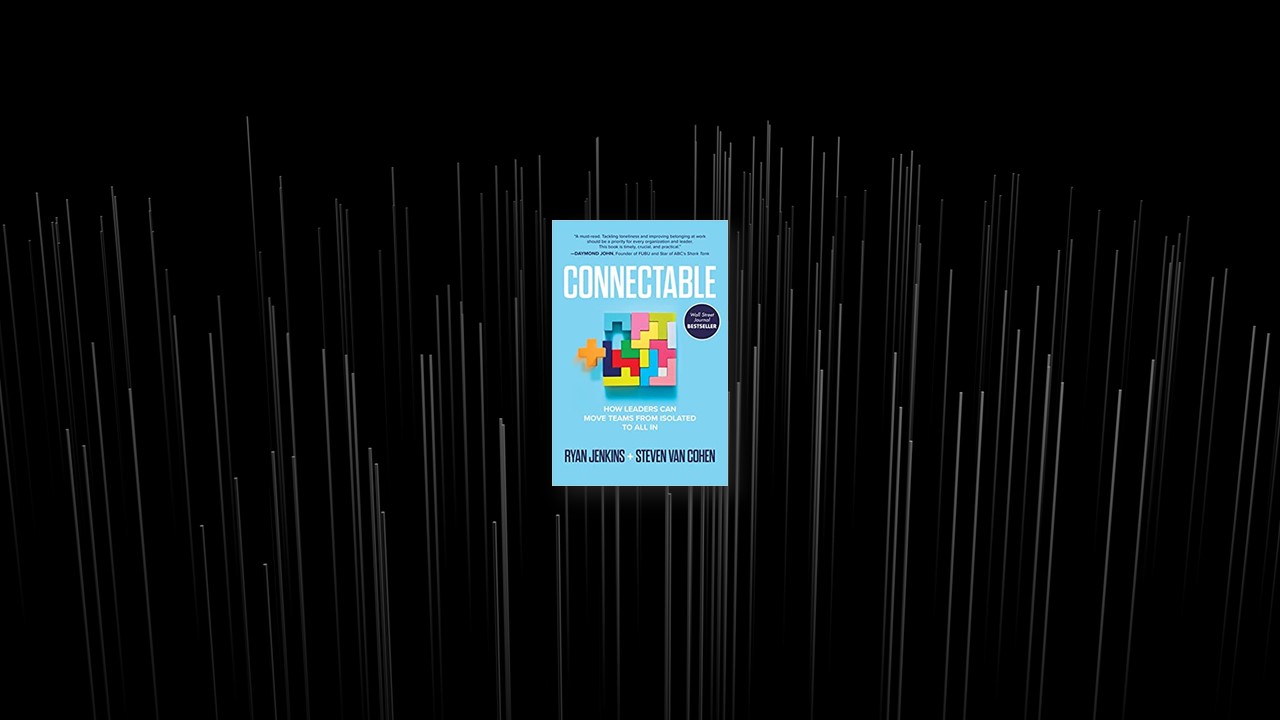You don’t necessarily need research to tell you that connecting with others is a well-being booster, because you’ve likely experienced a lifted spirit after conversing with someone, perhaps even today. Healthy people take time for social connection. Mature leaders take time for team connection.
Think of your team’s and your own well-being like the depleting battery of your phone. You don’t have a pleasant conversation with someone once and then feel recharged forever. Our well-being batteries are always depleting, and it takes seeking and establishing meaningful connections to replenish the battery. Much like connecting your phone charger to a power source to increase the battery life, you must connect with others to increase your well-being and protect against the empty battery that is loneliness.
We too readily assume that convenience, efficiency, and instant gratification are the roots to happiness. Rather, strong social connections are the power source for our well-being.
Your team’s batteries are depleting faster and faster, but before we equip you with the equipment to get your team recharged and reengaged, let’s first understand what’s draining our batteries and leaving us so lonely.
Look At Loneliness
Too often leaders unintentionally play the role of the bus driver. In the frenzy of getting to where they need to go, they neglect to truly see the passengers they’ve been entrusted with.
When passengers (your team members) are on your bus (your team), their well-being becomes your business. While you cannot control what they do outside of the bus, you can control how seen, safe, and engaged they are on your bus. As your team leaves the bus for the evening, weekend, or for greener pastures, how you made them feel while they were on the bus has the potential to impact their off-work behaviors and ripple across the entire community.
We’re not asking you to be a therapist or psychologist. You won’t be asked to diagnose mental health conditions or heal emotional scars. But rather, look for signs of loneliness and opportunities to create more connection across your team. We’re asking you to slow down. Put the bus in park. Get out of your seat. And look . . . really see your team.
Take it from a professional looker, Ansel Adams, who is widely considered one of the most influential landscape photographers of the twentieth century, “A photograph is usually looked at, seldom looked into.” Go beyond looking at and look into your team.
Invest In Connection
According to a study of 12,000 employees, managers, HR leaders, and C-level executives across 11 countries, 82 percent of workers believe robots can support their mental health better than humans can, and 68 percent would prefer to talk to a robot over their manager about stress and anxiety at work
Why are workers wanting to talk to robots instead of confiding in a human?
- Robots offer a judgment free zone (34 percent)
- Robots are unbiased (30 percent)
- Robots provide quick answers to health questions (29 percent)
For these benefits, workers are turning to virtual mental health services like VideoAmp that offers coaching, therapy, meditation, and other resources.
An overdependence on technology is a leading cause of loneliness; therefore we should not rely solely on AI-based tech solutions to address mental health at work. It’s a job best suited for a compassionate human. A shepherd.
Yet many leaders are either ignorant, ignoring, or ill-equipped to support the mental health of their team.
As the late great Vince Lombardi once said, “Most people fail not because of a lack of desire but because of a lack of commitment.” You have a desire to help your team (otherwise you wouldn’t be reading this), so let’s focus on commitment.
Think of yourself as a loneliness “first responder” who—like an emergency medical technician (EMT) is aware of the imminent dangers, trained to act, and committed to help—is now aware, knowledgeable, and committed to help, ready to spring into action at the first sign of loneliness, disengagement, or distrust.
Along with training and clearer information about where to go or who to ask for support, the mental health resource workers want most is a more open and accepting culture.7
That you can do. Turn on the siren, you’re on your way.
Narrow The Focus
Confusion spurs alienation. Kick confusion to the curb with clarity.
Astronauts avoid loneliness by having clarity in their direction. While the direction of their overarching mission is clear: safely up and then safely down; creating clarity in their roles, tasks, and daily routines is important.
They achieve clarity in the following ways:
- Know the duration of each mission.
- Know what resources they will have.
- Know what is required of them every day
Without a clear path, we’re susceptible to wander. Wandering leads to being lost. Being lost is lonesome. Carter Cast, professor at Northwestern and author of the book The Right—and Wrong—Stuff: How Brilliant Careers Are Made and Unmade, said, “the loneliest I have ever been was when I was managing at scale and I just did not know if I was doing it right. I did not know who I could talk to.”
Cast, the former CEO of Walmart.com and a senior leader at both PepsiCo and Electronic Arts, has seen firsthand how a lack of direction can lead people adrift. In an interview, he discussed how when people face a problem with a lot of unknowns, they often pull back, isolating themselves rather than seeking the advice they need. “People get scared and retreat.”
Having clarity around what your team does and the tasks at hand every day will help get them engaged.
Be Interruptible
Leaders are the least interruptible workers, and yet they are the ones who need to be interrupted most. The more important and serious you consider yourself, the less open you are to detours and interruptions.
Breaking our attention from the email inbox and directing it toward people to really hear what they are trying to convey is interruptibility. This discipline strengthens our relationship with others and helps us to communicate more effectively because we are fully receiving the information, both said and unsaid.
Leaders are often seduced by the perception of “having it all together.” They are tempted by the allure of “having all the answers.” Leaders place these unwarranted obligations on their own shoulders. The unnecessary pressure to be everything to the team causes well-intended leaders to not listen, dominate conversations, downplay nonurgent employee issues, lock themselves in an office, or hide behind back-to-back meetings. All these actions communicate that leaders are not interruptible.
Interruptions are a free ticket to a renewed perspective, an uncovered blind spot, and possibly a better future. So, the next time you are interrupted in the middle of a task, a routine, or a thought—smile and know this could lead you to your next big breakthrough.
Move a lonely workforce from isolated to all in by making your attention available to others. And if attention is the planet’s most valuable resource, then focus is one of the most valuable skills. In an instantaneous and ever-changing world, the ability to direct and maintain one’s attention is a superpower.
Be the hero your team deserves by focusing your attention on them.
Conclusion
Wolves hunt more successfully in packs, penguins share warmth in huddles, fish swim in schools for protection, and birds migrate in flocks to conserve energy. Together animals accomplish more. The same is true for humans.
Our ancient ancestors gathered together to stay safe from predators. Once they felt safe, they could redirect their efforts toward solving the next problem: in their case, being cold. Together they learned to control fire. Then on to the next problem. And so on.
Today your team gathers for the same reasons as our ancestors: to stay safe and solve problems—the problems of customers, clients, and users. And to stay safe from much different threats. They are no longer as obvious as weather, large animals, or disease, but inconspicuous threats, like loneliness, depression, and meaninglessness.
You as the leader are at the helm to address these new threats. Because if the team isn’t safe, they can’t readily solve the problem at hand, let alone the inevitable looming problems out in the not-so-distant future. The yoke of vision-casting, belonging-building, and action-spurring rests on the shoulders of leaders.
But don’t fret. You’re now aware and equipped to address one of the biggest looming threats to your team: loneliness. To improve your team’s situation, you just need you. No sweeping change management initiative is needed. No management approval. No team buy-in. Just you making a commitment right here and right now to create more belonging among your team.


